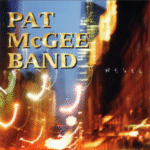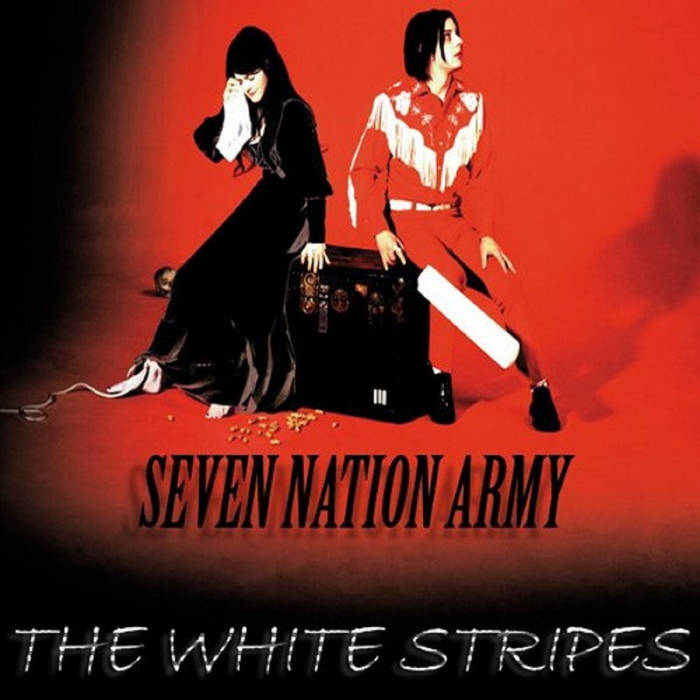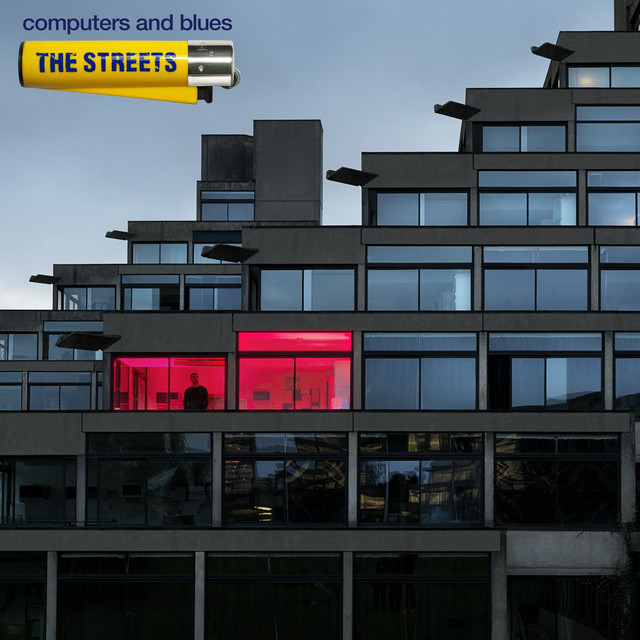 Pat McGee Band’s “Passion” stands as a quintessential expression of emotional rock, a song that melds heartfelt lyricism, melodic craftsmanship, and earnest delivery into a track that resonates with listeners long after the first note. Released in the early 2000s, “Passion” is emblematic of the band’s ability to balance radio-ready accessibility with intimate storytelling, a skill that has earned them a devoted following over the years. While the band is often associated with Americana, alternative rock, and post-grunge influences, “Passion” showcases the more tender, introspective side of their musical identity, highlighting the emotional core that underpins their larger catalog.
Pat McGee Band’s “Passion” stands as a quintessential expression of emotional rock, a song that melds heartfelt lyricism, melodic craftsmanship, and earnest delivery into a track that resonates with listeners long after the first note. Released in the early 2000s, “Passion” is emblematic of the band’s ability to balance radio-ready accessibility with intimate storytelling, a skill that has earned them a devoted following over the years. While the band is often associated with Americana, alternative rock, and post-grunge influences, “Passion” showcases the more tender, introspective side of their musical identity, highlighting the emotional core that underpins their larger catalog.
The song captures a universal human experience: the search for connection, the intensity of desire, and the vulnerability inherent in opening oneself to love. Pat McGee’s songwriting, combined with the band’s nuanced musicianship, allows the track to communicate these themes in a way that is both immediate and enduring, making “Passion” a standout moment in early 21st-century rock.
Origins and Inspiration
Pat McGee Band emerged from the Richmond, Virginia music scene in the mid-1990s, quickly developing a reputation for melodic, guitar-driven rock that blended lyrical introspection with energetic instrumentation. “Passion” was written as part of the band’s ongoing exploration of human emotion, focusing on themes of love, desire, and the intensity of personal connection.
Pat McGee has often described his songwriting approach as experiential and reflective, drawing inspiration from both personal relationships and universal human emotions. In “Passion”, this methodology is evident: the lyrics articulate desire and vulnerability without becoming cliché, while the musical arrangement reinforces the emotional weight of the words. The song reflects a moment of emotional clarity, a convergence of personal experience and artistic intention that transforms individual feeling into a collective experience for the listener.
The choice to focus on passion as a central theme is deliberate. While many rock songs address love and relationships superficially, McGee and his band emphasize authenticity, capturing both the intensity and fragility of emotional connection. The song does not merely describe love; it immerses the listener in the emotional landscape of longing, hope, and vulnerability.
Musical Composition and Style
“Passion” is structured as a melodic rock ballad, combining elements of alternative rock, soft rock, and Americana. The track opens with a gentle, arpeggiated guitar riff that immediately sets a contemplative tone. This introduction establishes both the emotional and musical foundation of the song, inviting the listener to lean in and experience the unfolding narrative.
Pat McGee’s vocal delivery is central to the song’s impact. His voice conveys both warmth and urgency, navigating the dynamic range of the lyrics with precision and feeling. Throughout the track, McGee alternates between intimate, breathy passages and more forceful, declarative lines, creating a sense of ebb and flow that mirrors the emotional journey of the lyrics.
The rhythm section, comprised of bass and drums, provides a steady yet nuanced foundation. Rather than dominating the arrangement, the rhythm supports the melodic and harmonic elements, allowing the guitars and vocals to occupy the spotlight while subtly reinforcing the song’s emotional pulse. Acoustic and electric guitars intertwine to create texture, with harmonic layering adding depth and resonance to the track.
Keyboard and subtle organ flourishes contribute additional color, enhancing the song’s reflective atmosphere without overwhelming the primary melodic elements. This careful balance of instrumentation ensures that every element serves the song’s emotional narrative, reinforcing the themes of longing, connection, and introspection.
Lyrics and Emotional Themes
The lyrics of “Passion” are a masterclass in emotional storytelling. McGee’s words explore desire, love, and vulnerability, emphasizing the intensity of emotional connection over narrative specificity. The song opens with evocative imagery that immediately establishes the tone:
“I feel it rising in me, like a river that won’t be contained”
This line sets the stage for a song about uncontrollable emotion, situating the listener within a moment of heightened awareness and intimacy. The imagery of flowing water conveys both movement and inevitability, suggesting that passion is a force beyond conscious control, a theme that resonates throughout the track.
The chorus, with its repetition of the titular word, functions as both a declaration and a meditation. By centering the song around the concept of passion, McGee emphasizes emotional authenticity, encouraging the listener to engage with their own feelings and experiences. Lines describing yearning, closeness, and vulnerability are delivered with sincerity, reinforcing the song’s universal appeal.
The lyrics also navigate the tension between desire and uncertainty. McGee acknowledges the risks inherent in opening oneself to emotion, balancing hope and longing with the recognition of potential heartbreak. This nuanced approach prevents the song from becoming overly sentimental, instead offering an honest and relatable exploration of human connection.
Production and Sound Engineering
The production of “Passion” prioritizes clarity, warmth, and emotional resonance. Vocals are foregrounded, ensuring that McGee’s delivery and lyrical nuance are fully audible, while instrumentation is layered to create depth without overcrowding the arrangement.
Guitars are mixed to highlight both melodic content and harmonic support. Acoustic arpeggios provide intimacy, while electric guitar lines punctuate key moments, adding dynamic contrast and reinforcing emotional peaks. Subtle reverb and delay effects create a sense of space, allowing the song to breathe and enhancing its reflective quality.
The rhythm section is carefully balanced, providing momentum and grounding without detracting from the song’s emotional core. Bass and drums are present but restrained, creating a foundation that supports improvisational flourishes and dynamic shifts in the vocal and guitar parts.
Keyboard textures are mixed to complement the harmonic framework, adding warmth and fullness to the arrangement. This attention to detail ensures that the production serves the song’s narrative, creating an immersive listening experience that aligns with its lyrical themes.
Musical and Stylistic Influences
“Passion” draws on a rich tapestry of musical influences, from classic rock and Americana to soft rock and contemporary alternative music. The song’s guitar work reflects the melodic sensibilities of 1970s and 1980s rock, while McGee’s vocal phrasing shows the influence of singer-songwriters who prioritize lyrical expression and emotional authenticity.
The track also incorporates elements of folk-inspired Americana, particularly in its use of acoustic textures and narrative lyricism. This fusion of rock and Americana allows “Passion” to occupy a unique space in the early 2000s music landscape, appealing to fans of both introspective singer-songwriter material and accessible, radio-friendly rock.
Stylistically, the song emphasizes emotional resonance over technical flashiness. Solos and instrumental passages are expressive rather than virtuosic, prioritizing tone, phrasing, and melodic development over speed or complexity. This approach aligns with the song’s thematic focus on passion, desire, and emotional authenticity, reinforcing its narrative through musical choices.
Reception and Cultural Impact
Upon its release, “Passion” received praise from both critics and fans, highlighting the band’s ability to balance radio accessibility with emotional depth. The track was noted for its melodic craftsmanship, lyrical sincerity, and cohesive arrangement, with reviewers often citing it as a standout moment on the album from which it originated.
The song resonated particularly strongly with audiences seeking music that addressed emotional vulnerability with honesty and sophistication. Its themes of desire, connection, and reflection struck a chord with listeners navigating personal relationships and emotional growth, contributing to its enduring popularity within the Pat McGee Band’s catalog.
Culturally, “Passion” exemplifies the early 2000s trend of emotionally expressive rock music that bridged the gap between post-grunge intensity and adult contemporary accessibility. Its success demonstrates the enduring appeal of songs that prioritize emotional authenticity, melodic clarity, and narrative resonance over formulaic rock tropes.
Musical Analysis
From a technical standpoint, “Passion” showcases thoughtful melodic construction, harmonic layering, and dynamic phrasing. The song’s chord progression is both familiar and emotionally compelling, utilizing major and minor tonalities to reflect shifts in mood and intensity.
Pat McGee’s vocal delivery is notable for its use of subtle bends, phrasing variations, and dynamic shifts, conveying both vulnerability and strength. Guitars, particularly the interplay between acoustic and electric parts, create a rich harmonic texture that complements the vocal line, while the rhythm section maintains forward momentum without overshadowing the melodic content.
Keyboard and background vocal elements provide additional layers of harmonic and emotional support. Their careful placement ensures that the arrangement remains cohesive while allowing for dynamic interplay between all instrumental and vocal elements.
The song’s structure—verse, chorus, bridge, and instrumental passages—facilitates narrative development and emotional progression. Each section contributes to the overarching theme of passion, with musical and lyrical elements reinforcing one another in a seamless, expressive whole.
Emotional Resonance and Thematic Depth
The enduring appeal of “Passion” lies in its ability to evoke emotion through both lyrical content and musical execution. The song’s narrative of desire, vulnerability, and connection is universal, allowing listeners to identify with its themes regardless of personal experience.
McGee’s sincerity and emotive delivery create an intimate connection, drawing listeners into the song’s emotional landscape. The arrangement—layered but uncluttered, dynamic but restrained—enhances this connection, ensuring that the listener is fully immersed in the narrative.
The song also explores the interplay between longing and fulfillment, tension and release, capturing the nuances of human emotion with sophistication and subtlety. This depth contributes to its longevity, allowing the track to remain relevant and emotionally resonant decades after its release.
Legacy and Influence
“Passion” has remained a defining track in the Pat McGee Band’s repertoire, frequently cited by fans and critics as one of the band’s most emotionally compelling songs. Its influence can be seen in later works that blend melodic rock sensibilities with introspective, narrative-driven lyrics.
The song’s emphasis on authenticity, emotional depth, and melodic clarity has inspired emerging artists seeking to create music that connects with listeners on a personal level. Its blend of accessibility and emotional complexity demonstrates how rock music can be both commercially viable and artistically meaningful, setting a benchmark for subsequent works in the genre.
“Passion” also highlights the importance of emotional storytelling in music. By prioritizing sincerity, vulnerability, and thematic cohesion, the track reinforces the idea that emotional resonance is as crucial to a song’s impact as technical skill or production quality.
Conclusion: A Timeless Ode to Desire
“Passion” by Pat McGee Band remains a standout example of emotional rock, a song that balances melodic craft, lyrical sincerity, and instrumental nuance to create a lasting impression. Its exploration of desire, vulnerability, and connection resonates universally, allowing listeners to inhabit the emotional world it depicts.
Through careful songwriting, expressive performance, and nuanced production, the band transforms a personal emotion into a collective experience, demonstrating the power of music to articulate what is often unspoken. The track’s enduring appeal lies in its honesty, melodic richness, and ability to evoke both reflection and connection, making it a cornerstone of the Pat McGee Band’s catalog and a lasting contribution to modern rock.
“Passion” exemplifies the emotional depth and musical sophistication that define the Pat McGee Band, capturing the essence of human experience in a way that is both intimate and expansive. Its combination of heartfelt lyrics, melodic instrumentation, and expressive performance ensures its place as a timeless ode to the complexities of desire and the enduring power of music to move the heart.


